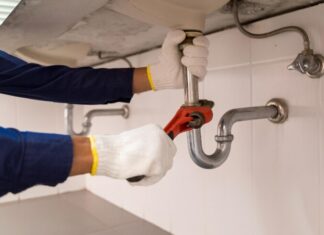From extreme weather conditions to plumbing failures, a flood can strike without warning. Nothing is worse than getting up in the morning and find a pool of water standing in your laundry room or basement. When flooding occurs, many tenants and homeowners undergo several challenges to get back their life on track and their homes to a healthy, safe living space.
Regardless of flood cause, homeowners and business owners have to dig deep into their pockets to handle expensive repairs. Additionally, they must face unsanitary conditions and have a lengthy cleaning process. But with a bit of caution and proper preparation, they can prevent such risks and keep their families and properties safe. In this article, we’ll discuss various steps to take to handle home flooding.
Before a Flood
Table of Contents
There are times where one may know the occurrence is a likelihood, but most of the time, there may be no warning. Flash floods tend to develop few minutes without visible rainfall. Besides, they may come unexpectedly right after drainage failure. Thus, it is critical to understand what to do to get prepared for a flood-hit. Keep aware of some of the warning signs of flooding. If your home is downstream from a river near an area that had forest fires recently, there’s a good chance that heavy rain will trigger flooding down the river. It doesn’t even have to be raining in your area at the time for this to occur. Take some time to look at how often an area has flooded in the past so you can get an idea of how frequently events like this occur. Being aware of current and past events like that.
Know if Your Home is in a Flood Zone
First and foremost, it is essential to know if your home or property is in a flood zone. Contact the relevant authorities or do your research to understand if the area has experienced floods in the past. By doing so, you can start preparations early and effectively to prevent damages that may arise in case of flooding.
Get a suitable Flood Insurance Cover
Registering with an insurance company is one way to get a little refund from damage caused by floods. However, many homeowner’s insurance policies do not cover damages resulting from floods. Therefore, be sure to contact your insurance agent about buying a flood insurance policy.
Protect the HVAC and Electrical Systems
As a rule of thumb, ensure all the electrical and HVAC systems in your home are raised at least 12-inches. This is a better height for flood elevation and helps prevent water from causing damage to the equipment.
Construct Barriers
Constructing floodwalls, levees, and beams around your home can help restrict the entry of floodwater. Also, place sandbags around the windows and doors to reduce property damage due to a flood.
Remember to Dry Flood Proof
In this case, seal all the property’s outdoor areas below the flood protection level to make them watertight. Besides that, coat all the walls using a waterproof sealant to restrict water entry. Plus, be sure to install impervious shields on the doors, windows, and any other openings.
Do Last Minute Preparations
Is the flood just about to hit? If so, ensure the electricity is off and get your emergency kit fully equipped with necessary supplies just if a flood occurs. More importantly, have an emergency exit plan, especially for the basement tenants. So, if a natural disaster like a flood hits, people can quickly get out of the property or home to safer places. This will help minimize the risk of loss of lives and valuables due to flooding. Additionally, discuss with your tenants or loved ones where to find each other if separated or lost in the event of a natural disaster.
Steps to Take During A Flood
Suppose the water pipe has burst or is leaking; you’ll only need to switch the water supply and do cleaning, right? But what if the flood is widespread due to a storm? In the event you learn that a major flood is possible to happen in your vicinity, here are some of the things you should do.
- Move to higher grounds and call for help.
- Keep in touch with the latest by listening to the radio, watching television, or check for internet reports.
- Stay aware of the regions that get affected by floods, for example, drainage channels and streams.
- Evacuate if necessary upon instructions from the government.
- Keep valuable and essential items by moving them to upper floors. Bring all the outdoor furniture inside, turn off the main switches of utilities, and disconnect electrical appliances.
After a Flood-Hit
- Ensure it is safe to get back to your property and inspect damage caused
- Contact your insurance company to file a claim
- Remove wet items out of the house, clean them thoroughly, and let them dry completely
- Remove water left in your home. Depending on the flood coverage, find or rent the right type of equipment like vacuum trucks or industrial vehicles to safely and effectively drain water out of a basement
- Open the doors and windows on dry days to ventilate and dry your property
- Dehumidify the basement to get rid of musty odors and restrict mildew and mold growth
- Use an air purifier to restore indoor air quality
Whenever a flood occurs in an area, both homeowners and tenants are left with horrible experiences. Some die, properties get damaged by water, and others are forced to flee their comfort homes. The worst part is, they may don’t know what steps to take once it is safe for them to go back. The steps above will help you prepare for and handle home flooding to your best.










